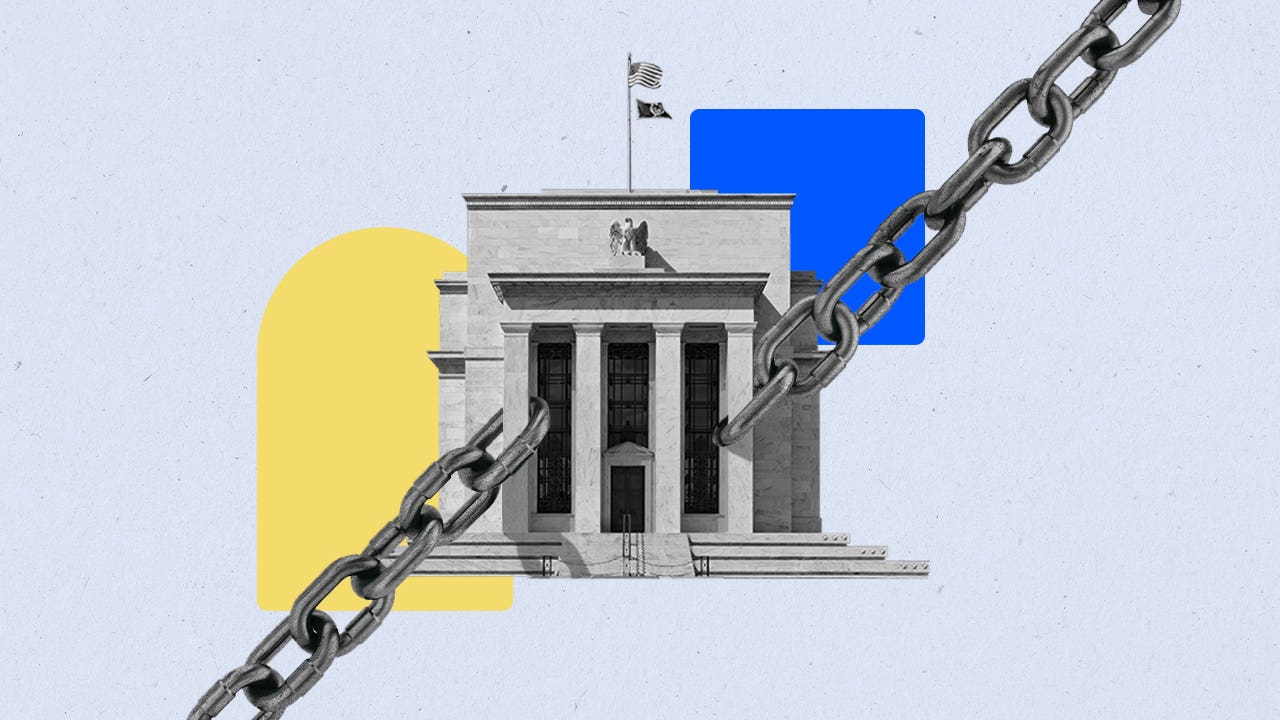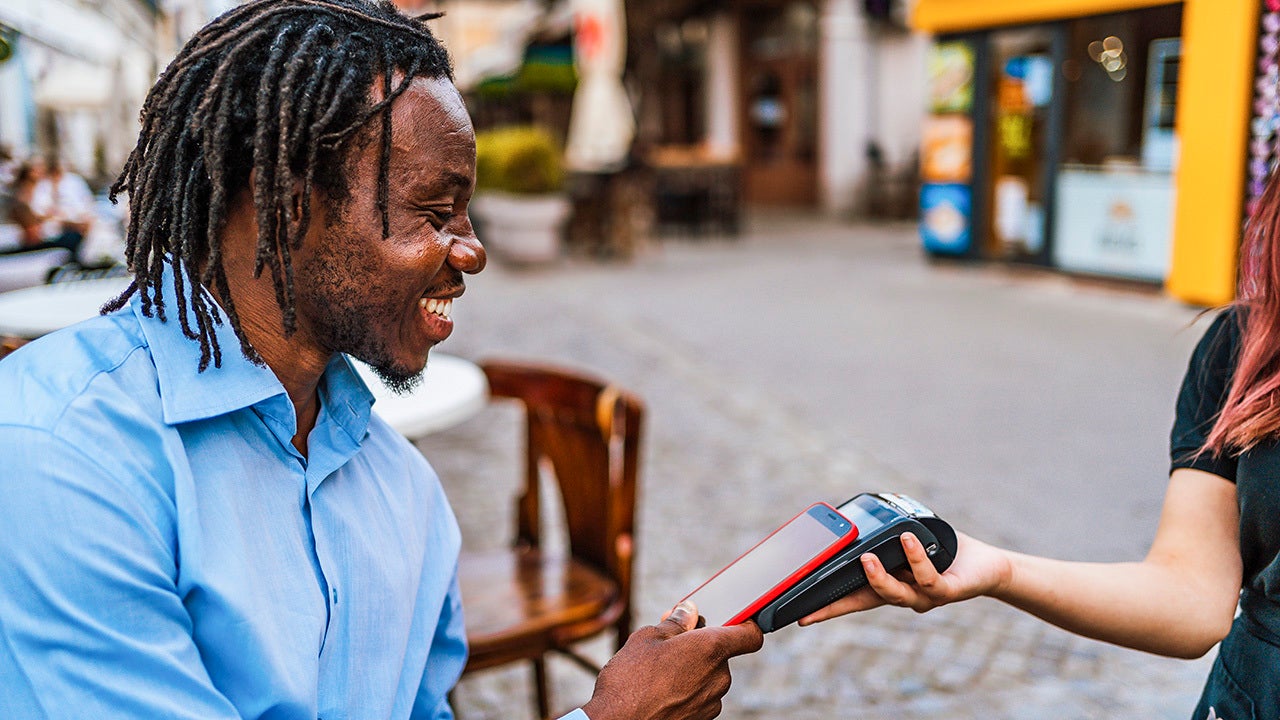Is it safe to link bank accounts?

Our writers and editors used an in-house natural language generation platform to assist with portions of this article, allowing them to focus on adding information that is uniquely helpful. The article was reviewed, fact-checked and edited by our editorial staff prior to publication.
Key takeaways
- Linking bank accounts enables you to transfer funds between two accounts. Having linked accounts can prove useful when you want to pay bills or add money to your savings.
- To help ensure it's safe to link your accounts, banks use measures such as encrypting data and requiring users to verify their identity.
- Bank customers can also help keep their accounts safe by choosing strong passwords and using multi-factor authentication, whenever possible.
You may have encountered an option to link multiple bank accounts while online banking or to link an account to a third-party finance app. Linking bank accounts is a way to make it easier to transact between the two, but it can come with some other unexpected benefits.
Here’s why you might want to link bank accounts and how safe it is to do so.
What does linking bank accounts do?
Generally, the purpose of linking two bank accounts is to allow greater movement between the two, making it easier to transfer money, split direct deposits and automate savings. There may also be other benefits of doing so, depending on where the accounts are located.
Linking bank accounts with the same bank
Many consumers have multiple types of bank accounts with the same bank, such as a checking and a savings account or a checking and a money market account. You can make transfers between accounts with the same bank, but taking the extra step of linking the accounts serves the purpose of avoiding certain fees.
Some banks may waive monthly maintenance fees when you link your checking account to a savings account at the same institution, though you may need to meet a minimum balance across the accounts.
Another fee that linking the accounts can help to bypass is an overdraft fee. When you link a savings and a checking account, the savings account can serve as a backup to cover any amount beyond what’s available in your checking account. That way, instead of paying for an overdraft, the funds are simply withdrawn from the linked savings account.
It also might be necessary to link a checking and a savings account before you can automate your savings.
Linking bank accounts at different banks
You may have a checking account at one financial institution and a savings account at another. To make it easier to transfer money between the two, such as to fund a newly opened account, you’ll need to externally link them.
Once the accounts are linked, you can typically check on the details of each account (including their balances, account numbers and transactions) in one place, making it more convenient to keep track of each account. However, you won’t be able to transact on the externally linked account, other than transferring funds into it.
Making transfers between the linked accounts can be done externally and usually at no cost. You may also be able to set up split direct deposit with the linked accounts, so that a portion of your paycheck goes into each of the accounts.
Is linking bank accounts safe?
Banks and credit unions use several security measures to ensure that it’s safe to link bank accounts. These safeguards include:
- Transport Layer Security: This encrypts data that’s sent over the internet, so hackers or other cybercriminals can’t see your personal information when it’s electronically shared between banks.
- Tokenization: This process securely exchanges data online by converting it into tokens, which hide sensitive information.
- Multi-factor authentication: This requires you to verify your identity through multiple channels, such as providing a PIN and fingerprint verification.
Still, it’s important to keep your personal information safe, including passwords, account numbers and PINs. Make sure to keep this information private, and always use multi-factor authentication when it’s an option.
Is it safe to link your bank account to a third-party app?
There are many finance apps that require you to link a bank account to them, for the sake of making it easier to manage your bank accounts. These apps can help you automate savings, track spending or analyze your account for unnecessary fees and subscriptions. While many apps provide thorough security measures to protect your information, they may not all come with the same level of security as a bank.
Many reputable financial apps come with security features and guaranteed protection for unauthorized transactions. PayPal, for example, states that it “uses extensive security measures to safeguard your bank account or credit card numbers. We never reveal your financial information to anyone unless we have your permission or we are required by law to do so.” It also offers full coverage for unauthorized transactions. However, in the event that such an unauthorized transaction occurs, it may take a while before you get that money back.
Some apps are also protected by the Electronic Fund Transfer Act, which protects consumers against unauthorized transactions made electronically. The act protects peer-to-peer (P2P) payments, such as those made through Venmo, Zelle or Cash App. If money is fraudulently taken from your account, you can be held liable for no more than $50, as long as the transaction is reported within two days. Within 60 days, you may be held liable for up to $500, and after that you may be liable for the whole amount.
Before you link an external bank account to a third-party app, make sure that the app is reputable and offers protection against unauthorized transactions.
Benefits and risks of linking bank accounts
Benefits
- You may be able to use a linked account as overdraft protection and avoid incurring an overdraft fee.
- Some banks waive the monthly maintenance fee when you link another account.
- It’s easier to make transfers between the accounts, and you won’t have to pay for a wire transfer fee.
- You may be able to take advantage of money-saving features, such as automated savings and split direct deposit.
- If the accounts are at different institutions, linking them makes it possible to view the accounts’ details and activity in one place.
Risks
- While a bank that’s insured by the Federal Deposit Insurance Corp. (FDIC) will have built-in security measures to protect your information, some third-party apps may not be as thorough. For example, they may not offer multi-factor authentication.
- Linking a bank account to a third-party app means you’re exposing more personal data within the app. That data could be vulnerable to potential data breaches. For example, in September 2022, the fintech Revolut experienced a data breach, which reportedly exposed the data of more than 50,000 users. However, Revolut quickly responded and no funds were compromised.
How to link bank accounts
When you have multiple accounts set up with the same bank, often the bank will link these accounts automatically. Otherwise, you can ask the bank to link these accounts for you.
For linking an external bank account, follow these steps:
- Gather the information you’ll need for the external bank account you want to link. This includes the account number, routing number and login information.
- Log in to your bank’s website or mobile app and find the option to link an external account in the dashboard or settings, which will likely say “Link external account” or “Add external account.”
- Select or type in the financial institution that you want to externally link to.
- You may be prompted to log in to the external bank account and provide the account number and routing number.
- The bank may ask you to complete a linking-verification process before the accounts are fully linked. This usually comes in the form of a small, temporary deposit made by the bank into the external account. You’ll review the account’s activity and confirm that the deposits were made successfully.
Bottom line
Linking bank accounts can serve multiple purposes, whether it’s allowing you to fund overdrafts with another account, waiving certain fees or making it easier to transfer money between the accounts. While it’s generally safe to link accounts, be wary of lesser-known third-party financial apps and never share account login and personal information.
–Bankrate senior writer Karen Bennett updated this article.





